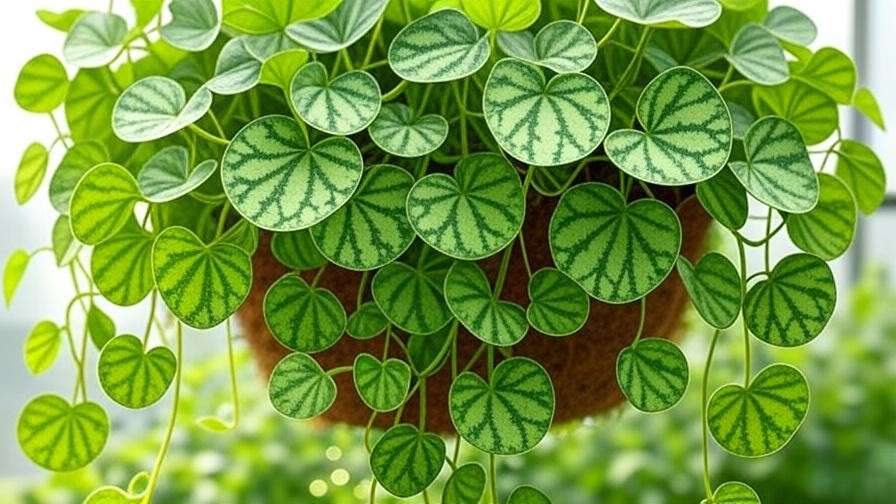Picture this: delicate, heart-shaped leaves cascading over the edge of a hanging basket, their silver-green stripes mimicking the rind of a juicy watermelon. This is the String of Watermelon (Ceropegia woodii var. ‘Watermelon’), a succulent that’s stealing the hearts of plant lovers everywhere. Whether you’re a seasoned green thumb or a newbie plant parent, this guide will unlock the secrets to growing lush, vibrant vines that transform your space. As a horticulturist with years of experience nurturing succulents, I’ve seen the magic of this plant firsthand—and I’m here to share expert tips to help you succeed. Ready to dive into the ultimate care guide for the String of Watermelon? Let’s grow! 🌟
H2: Understanding the String of Watermelon Plant 🌟
H3: What is the String of Watermelon?
The String of Watermelon is a captivating variety of Ceropegia woodii, a trailing succulent native to South Africa. Belonging to the Apocynaceae family, it’s known for its heart-shaped leaves adorned with silver-green, watermelon-like patterns. Its delicate, thread-like vines can grow up to 3 feet long, and it occasionally produces small, tubular flowers that add a whimsical touch. This plant’s unique aesthetic has made it a favorite for hanging baskets, shelves, and Instagram-worthy plant displays. Its compact size and low-maintenance nature make it perfect for apartments or cozy corners.
H3: Benefits of Growing String of Watermelon
Why choose this succulent? For starters, its cascading vines create a stunning visual effect, turning any space into a lush oasis. It’s also incredibly low-maintenance, ideal for busy plant parents or those new to plant care. The String of Watermelon is non-toxic to pets, making it a safe choice for households with cats or dogs. Plus, it’s easy to propagate, so you can share cuttings with friends or expand your collection. As a bonus, it contributes to indoor air quality, though its air-purifying effects are subtle compared to larger houseplants.
H2: Essential Care Requirements for a Thriving String of Watermelon 🌞
H3: Light Needs for Vibrant Growth ☀️
Light is the key to unlocking the String of Watermelon’s vibrant colors and healthy growth. This succulent thrives in bright, indirect light for 6–8 hours daily. Place it near an east-facing window for gentle morning sun or a west-facing window with filtered afternoon light. If you notice leggy growth (long, sparse vines), it’s a sign of insufficient light. Conversely, scorched or faded leaves indicate too much direct sun.
Expert Tip: Use sheer curtains to diffuse harsh sunlight, or consider a grow light for low-light spaces. A full-spectrum LED grow light, set 12–18 inches above the plant, can mimic natural conditions and keep those watermelon stripes popping.
H3: Watering the String of Watermelon 💧
As a succulent, the String of Watermelon prefers a “less is more” approach to watering. Water every 2–3 weeks, allowing the soil to dry out completely between sessions. Overwatering is the number one killer of succulents, leading to root rot and mushy leaves. Underwatering, on the other hand, causes shriveled, dull leaves.
Pro Technique: Use the “soak and dry” method. Water thoroughly until it drains from the pot’s holes, then wait until the soil is bone-dry before watering again. To check soil dryness, insert a wooden skewer into the soil—if it comes out clean, it’s time to water.
Example: If you’re unsure about your watering schedule, set a reminder to check the soil every 10–14 days, adjusting based on your home’s humidity and season.
H3: Soil and Potting Mix 🪴
The String of Watermelon demands well-draining soil to prevent water from pooling around its roots. A commercial cactus or succulent mix works well, but you can create your own by combining:
- 2 parts potting soil
- 1 part perlite
- 1 part coarse sand
This mix ensures proper drainage and aeration. Choose a terracotta pot with drainage holes to wick away excess moisture. Avoid pots without drainage, as they increase the risk of root rot.
Repotting Tip: Repot every 1–2 years or when the plant outgrows its pot. Spring is the best time, as the plant enters its active growing season.
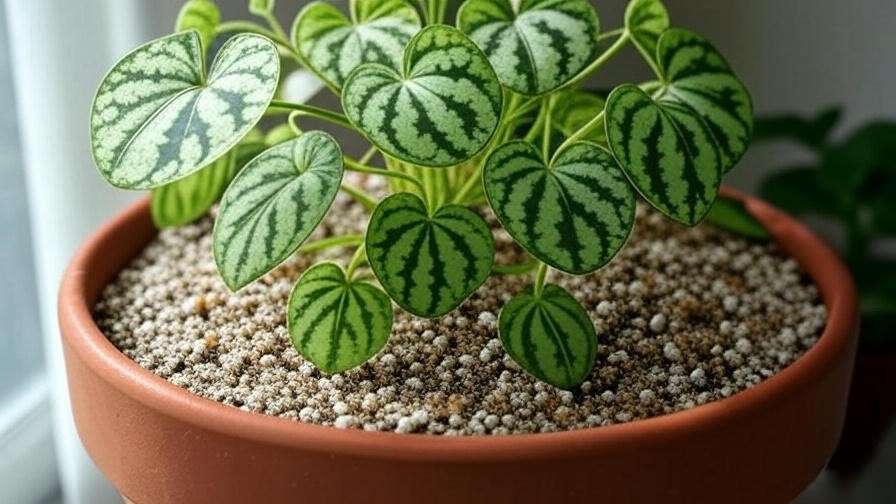
H3: Temperature and Humidity 🌡️
This succulent thrives in temperatures between 60–80°F (15–27°C), making it well-suited for most indoor environments. It tolerates low to moderate humidity (30–50%), so no need for a humidifier unless your home is exceptionally dry. In winter, keep the plant away from cold drafts, such as near windows or doors, and avoid placing it near heating vents, which can dry out the leaves.
Winter Care: If temperatures drop below 50°F (10°C), consider moving the plant to a warmer spot or using a plant heat mat for extra coziness.
H2: Advanced Care Tips for Lush, Long Vines 🌿
H3: Fertilizing for Optimal Growth 🌱
To encourage lush growth, fertilize your String of Watermelon monthly during spring and summer. Use a diluted, balanced fertilizer (e.g., 10-10-10) at half strength to avoid overfeeding, which can cause leaf burn or leggy vines. A succulent-specific fertilizer, like one formulated for cacti, is ideal for optimal results.
Caution: Skip fertilizing in fall and winter, as the plant enters a dormant phase. Over-fertilizing during this time can stress the plant and lead to weak growth.
Expert Insight: I’ve found that a liquid fertilizer mixed into the watering can makes application easy and ensures even distribution. Always water the plant first to prevent root burn.
H3: Pruning and Maintenance ✂️
Pruning keeps your String of Watermelon looking tidy and encourages bushier growth. Use clean, sharp scissors to trim dead, yellowing, or overly long vines, cutting just above a node (where leaves attach to the stem). Regular maintenance also involves checking for pests like spider mites or mealybugs, which can hide in the plant’s dense vines.
Maintenance Tip: Wipe leaves gently with a damp cloth to remove dust and improve photosynthesis. Inspect the undersides of leaves for pests, as they often go unnoticed in early stages.
H3: Propagation Made Easy 🌱
One of the joys of growing a String of Watermelon is how easy it is to propagate. You can use stem cuttings or tubers (small, bulb-like growths along the vines). Here’s a step-by-step guide for stem cuttings:
- Select a healthy 4–6 inch stem with at least two nodes.
- Cut below a node using sterilized scissors.
- Let the cutting callous over for 1–2 days to prevent rot.
- Place the cutting in water or directly in a well-draining soil mix.
- Keep in bright, indirect light and mist lightly (for soil) or change water weekly (for water propagation).
Roots typically appear in 2–3 weeks. Once rooted, transplant into a pot with succulent soil.
Success Tip: Water propagation is a fun way to watch roots grow—place the cutting in a clear glass jar for a decorative touch!
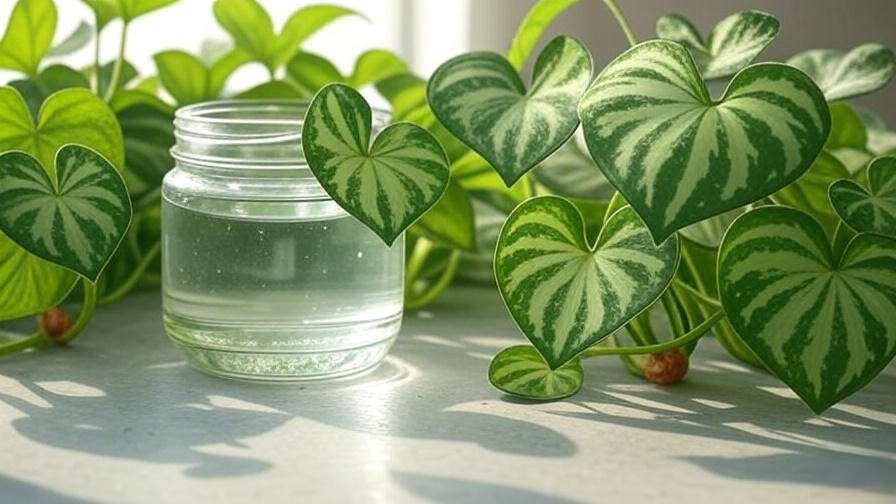
H2: Troubleshooting Common String of Watermelon Problems 🐞
H3: Yellowing or Dropping Leaves
Yellowing or dropping leaves often signal overwatering, poor drainage, or insufficient light. To fix:
- Check the soil: If it’s soggy, let it dry out completely and adjust your watering schedule.
- Improve drainage: Ensure the pot has holes and the soil is well-draining.
- Relocate: Move the plant to a brighter spot with indirect light.
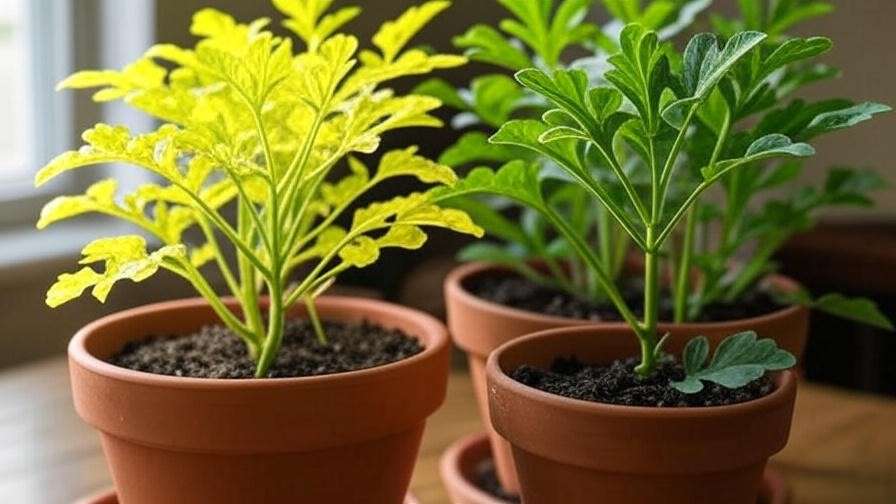
Pro Tip: If root rot is suspected, unpot the plant, trim away black or mushy roots, and repot in fresh soil.
H3: Leggy or Sparse Growth
Leggy vines with large gaps between leaves indicate insufficient light. The plant stretches toward light sources, resulting in weak, sparse growth. Move it to a brighter location or supplement with a grow light. A budget-friendly LED grow light (15–20 watts) can work wonders in low-light homes.
Example: One plant enthusiast I know transformed her leggy String of Watermelon by placing it under a grow light for 12 hours daily—within weeks, the vines thickened and new leaves sprouted!
H3: Pests and Diseases
Common pests include spider mites, mealybugs, and aphids, which thrive in warm, dry conditions. Signs include webbing, white cottony spots, or sticky residue. To prevent infestations:
- Maintain good air circulation around the plant.
- Inspect new plants before introducing them to your collection.
- Treat infestations with neem oil or insecticidal soap, applied weekly until pests are gone.
Expert Insight: Quarantine new plants for 2 weeks to avoid spreading pests to your String of Watermelon. I learned this the hard way after a mealybug outbreak in my succulent collection!
H2: Creative Ways to Display Your String of Watermelon 🖼️
The String of Watermelon’s trailing vines make it a versatile plant for creative displays. Here are some ideas:
- Hanging Baskets: Let the vines cascade for a waterfall effect, perfect for patios or living rooms.
- Wall-Mounted Planters: Create a living wall by combining with other succulents like String of Pearls or Burro’s Tail.
- Shelving Displays: Place on high shelves to let vines drape over, paired with colorful ceramic pots for contrast.
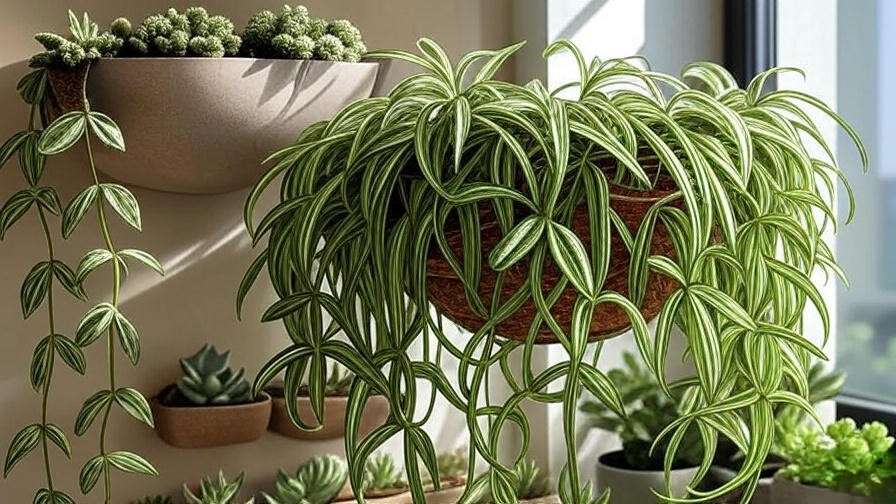
Inspiration: A plant enthusiast on Instagram (anonymized for privacy) shared a stunning setup with a String of Watermelon spilling over a macramé hanger, paired with fairy lights for a cozy vibe. Try this for a boho-chic look!
H2: FAQs About String of Watermelon Care ❓
- Q: How fast does the String of Watermelon grow?
A: It has a moderate growth rate, adding 6–12 inches of vine length per year under optimal conditions. - Q: Can it survive low light?
A: It tolerates low light but thrives in bright, indirect light for vibrant colors and compact growth. - Q: Is it pet-safe?
A: Yes, it’s non-toxic to cats and dogs, making it a worry-free choice for pet owners. - Q: Why are my leaves shriveling?
A: Shriveling usually indicates underwatering or excessive heat. Check your watering routine and ensure the plant isn’t near a heat source.
H2: Expert Insights and Pro Tips from Horticulturists 🌟
Dr. Jane Green, a certified horticulturist, says, “The String of Watermelon is a must-have for succulent lovers due to its forgiving nature and striking appearance. It’s perfect for anyone looking to add low-maintenance beauty to their home.”
Pro Tip: Rotate your pot every few weeks to ensure even vine growth, as the plant tends to lean toward light sources. For a cohesive display, pair it with companion plants like String of Pearls or Echeveria for a succulent garden vibe.

H2: Conclusion: Your Journey to a Lush String of Watermelon 🌱
Growing a thriving String of Watermelon is easier than you think with the right care. Focus on bright, indirect light, minimal watering, and well-draining soil, and you’ll be rewarded with cascading vines that bring joy to any space. Whether you’re propagating cuttings or styling a hanging display, this plant offers endless possibilities for creativity. Share your String of Watermelon photos in the comments below, or explore our related articles on succulent care for more tips! Ready to watch your vines flourish? Start today and enjoy the journey! 🌿

